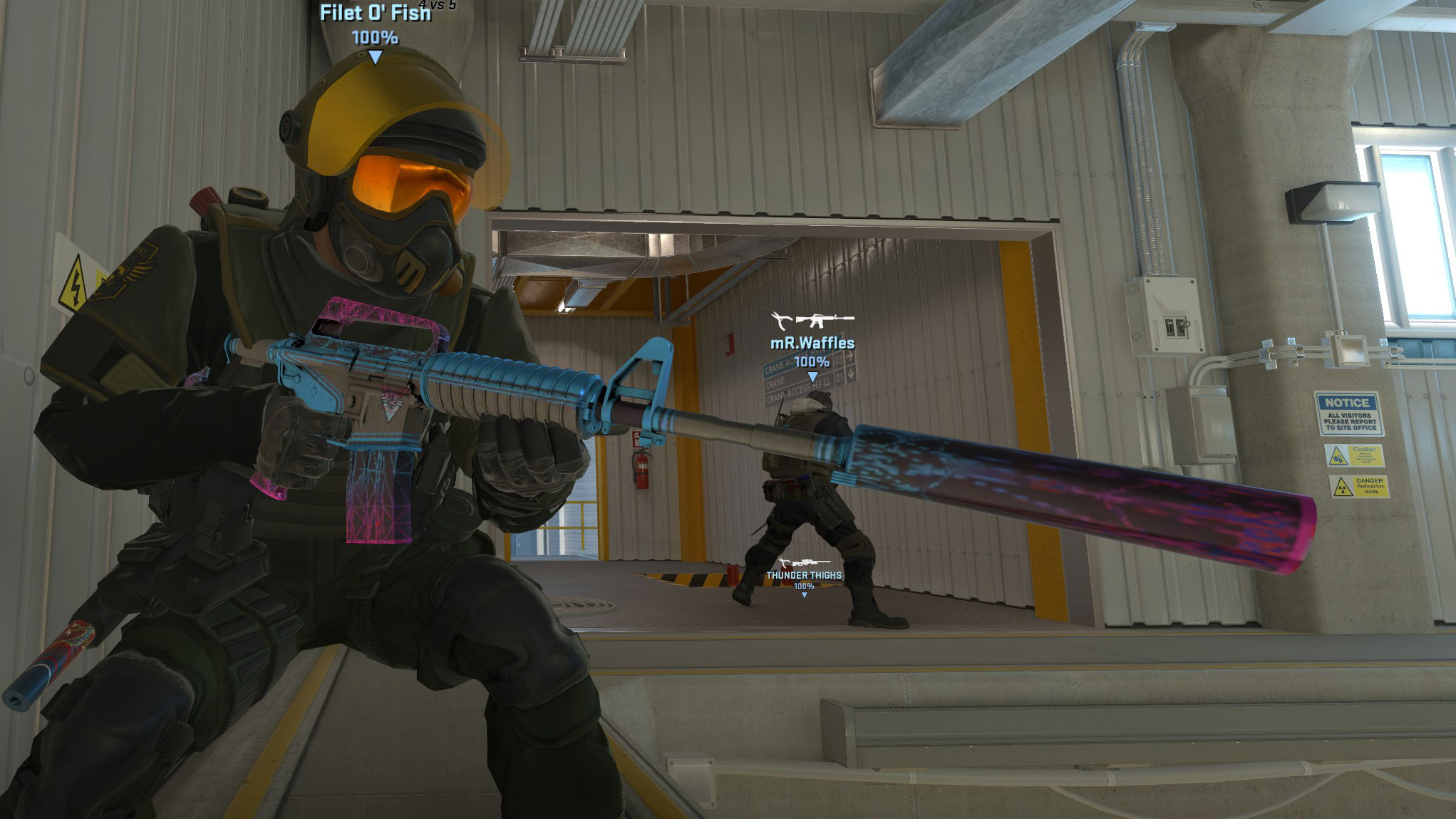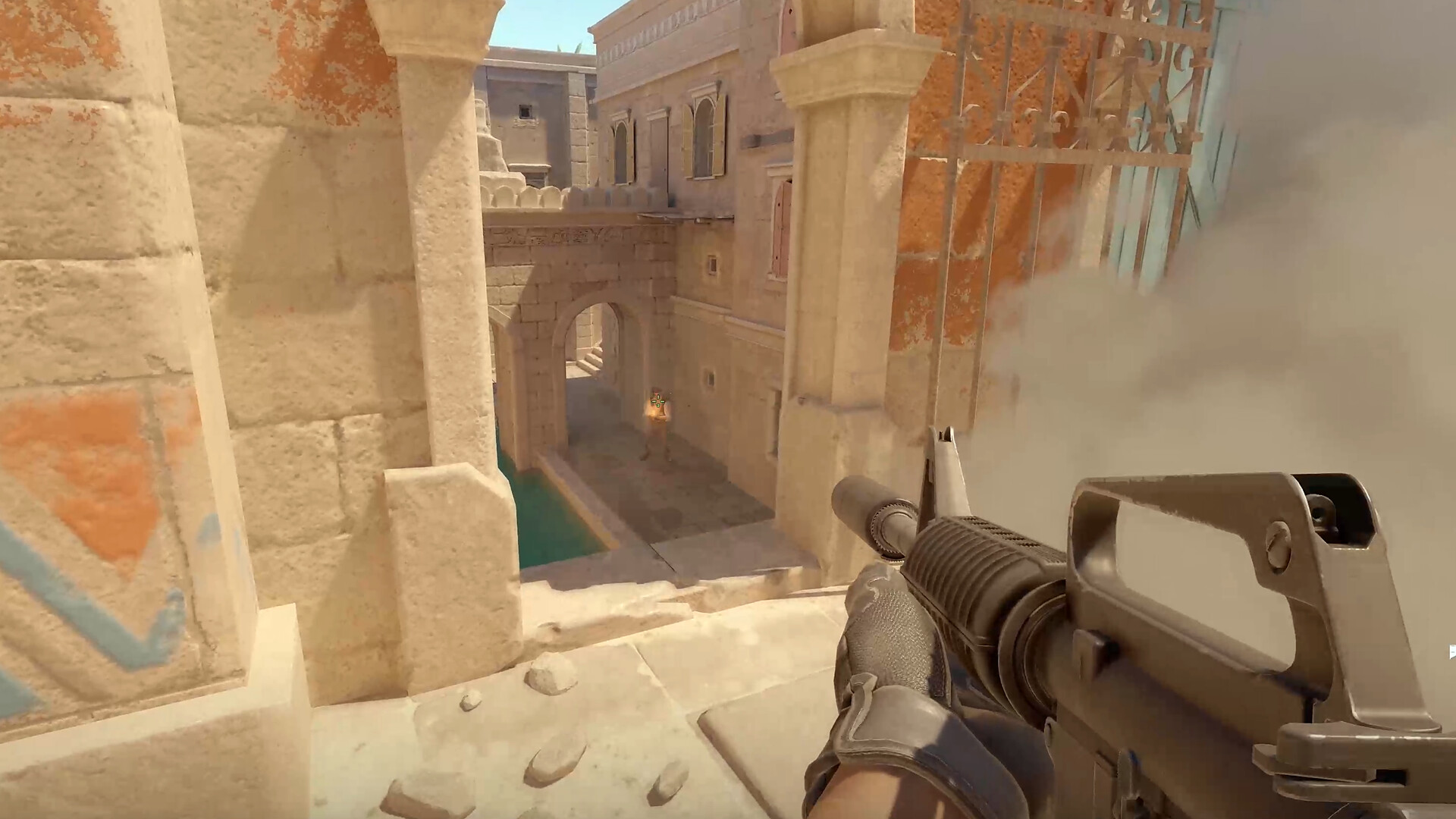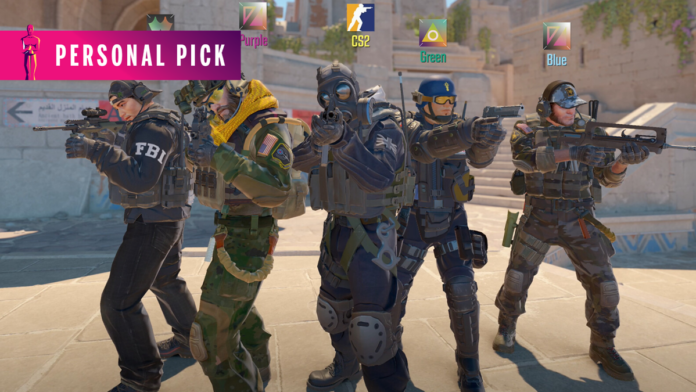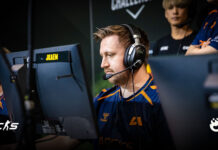If you were asked to name the most-successful game on Steam at the start of 2023, Counter-Strike: Global Offensive’s 30 million monthly players would have made that a good pick. Now we’re at the end of the year and, if you want to play Counter-Strike: Global Offensive, you can only do so through obscure means. It’s not just gone. It’s been replaced.
Personal Pick
In addition to our main Game of the Year Awards 2023, each member of the PC Gamer team is shining a spotlight on a game they loved this year. We’ll post new personal picks, alongside our main awards, throughout the rest of the month.
This year Valve launched a game, and a sequel, in a manner that I think is unprecedented both in its concept and smoothness of execution. Rumours had swirled for years that Counter-Strike: Global Offensive was receiving an upgrade to Source 2, Valve’s current in-house engine, but in early March the speculation, driven by dataminers and driver leaks, reached a feverish crescendo. The talk was not of an upgrade, but a new entry: Counter-Strike 2.
In Valve-land, over-excited rumours are a part of life. But this time they were real, and on 22 March Counter-Strike 2 was announced: A ground-up rebuild-slash-upgrade of Counter-Strike: Global Offensive that Valve considers so fundamental it put a number on it. The original Counter-Strike mod was released in 1999, and became a standalone title in 2000. Since then we’ve had CS:Source and CS:GO, among others, but this is the first game billed as a direct sequel.
You’d be forgiven for thinking: So what? After all, what we usually expect from a sequel is change: A tweak to the formula, more ‘stuff’, new options. But Counter-Strike 2 is not like that, for now at least. Instead the developers behind it understood that Counter-Strike’s core maps and match style were what kept this series not just alive but vibrant for 23 years, and so focused on protecting that core competitive experience as the first priority.
But there was one other major consideration. CS:GO was a remarkable game because of how it had evolved since launch, part of which was the introduction of a skins market to the game. Over its lifespan this became its own in-game and (unauthorised, unofficial, skeezy) internet economy, arguably as much a part of the community experience as anything else. Players lusted for knives (the rarest skins), accumulated their own little hoard over time, and awed at the super-rare items being traded for suspiciously large amounts of money.

Lord knows what the backend logistics were, but what mattered to players was that everything in their inventory seamlessly transitioned over to CS2. And Valve then set about easing players in themselves, initially releasing CS2 as a limited beta test for a small fraction of the community, rotating maps and modes, and gradually inviting more in. The initial release date was summer, but a minor case of Valve Time saw the full release in September, and yet another bold move: CS2 just straight-up replaced CS:GO for everyone. Overnight, Steam’s most-played game was gone.
What impresses me most about CS2 is how smoothly the changeover happened.
Long live the king. I’ve written extensively about why I love Counter-Strike, and what impresses me most about CS2 is how smoothly the changeover happened. It’s a hazy memory now but CS:GO’s release saw the playerbase split between that, Source, and 1.6. The latter are still out there but there’s no doubt that CS2 is the Counter-Strike of our age, and everything players (OK: me) have loved about the series is upgraded, improved and re-presented without the nature of the experience being changed one iota.
Counter-Strike matches, you see, have a character to them. At its heart is the simple push-and-pull of the bomb and the bomb sites, making each round start with a tactical decision from both teams. You never just set out to shoot someone: You try to predict and plan for it. You try to surprise, you try to hide, you try to ambush. Some rounds are over in seconds, with five dead terrorists having rushed into a withering welcome of M4 spam.
And sometimes it just goes to hell. Every round gives you a different challenge, a different configuration, and something new to face. When I muse on why Counter-Strike is the shooter I most enjoy, I think it is this combination of near-perfect basic principles with moment-to-moment variety. I play plenty of other shooters, and some I like very much indeed, but with everything else I’ve hit a point of over-familiarity, like I’ve had too many similar match experiences.

It’s ironic then that Counter-Strike, the most familiar FPS of all with elements that have been fixed and unchanging for decades, remains the one with that great capacity for emergent play filled with surprises and tricks. Even at the pro level, where every player has superb mechanical skill, the real question is how teams are going to set up and take the engagements with each other, how one side’s going to force the issue, and whether there’s a move that flips the script.
Every round gives you a different challenge, a different configuration, and something new to face.
There are criticisms to be made of CS2: It didn’t launch with all of CS:GO’s modes, there were bugs (the best: Smooth Criminal), and some didn’t like being forced into the change. It also shied away from major additions and changes, even though Valve’s said things like new weapons will come, but to me that’s the strength of CS2 rather than a weakness.
Valve developed this game in the background for years, and had the confidence not to mess with a winning formula. CS2’s developers understood that those 30 million players kept coming back to CS:GO for a reason and that, if there was a starting point for the sequel, it had to be the final form (and the ending point) of its predecessor. It didn’t mess with a winning formula, but recreated it so perfectly that even one of the most regularly irate playerbases out there has found relatively little to complain about.
People have been playing Counter-Strike in some form for well over two decades. CS2 is standing on the shoulders of giants, and it knows well enough what its identity as a game had to be: That thing you love, but better. Or in other words, the best competitive shooter of 2023, and the previous 23 years to boot.
Read more: PC Gamer’s exclusive interview with CS2’s developers.
www.pcgamer.com







